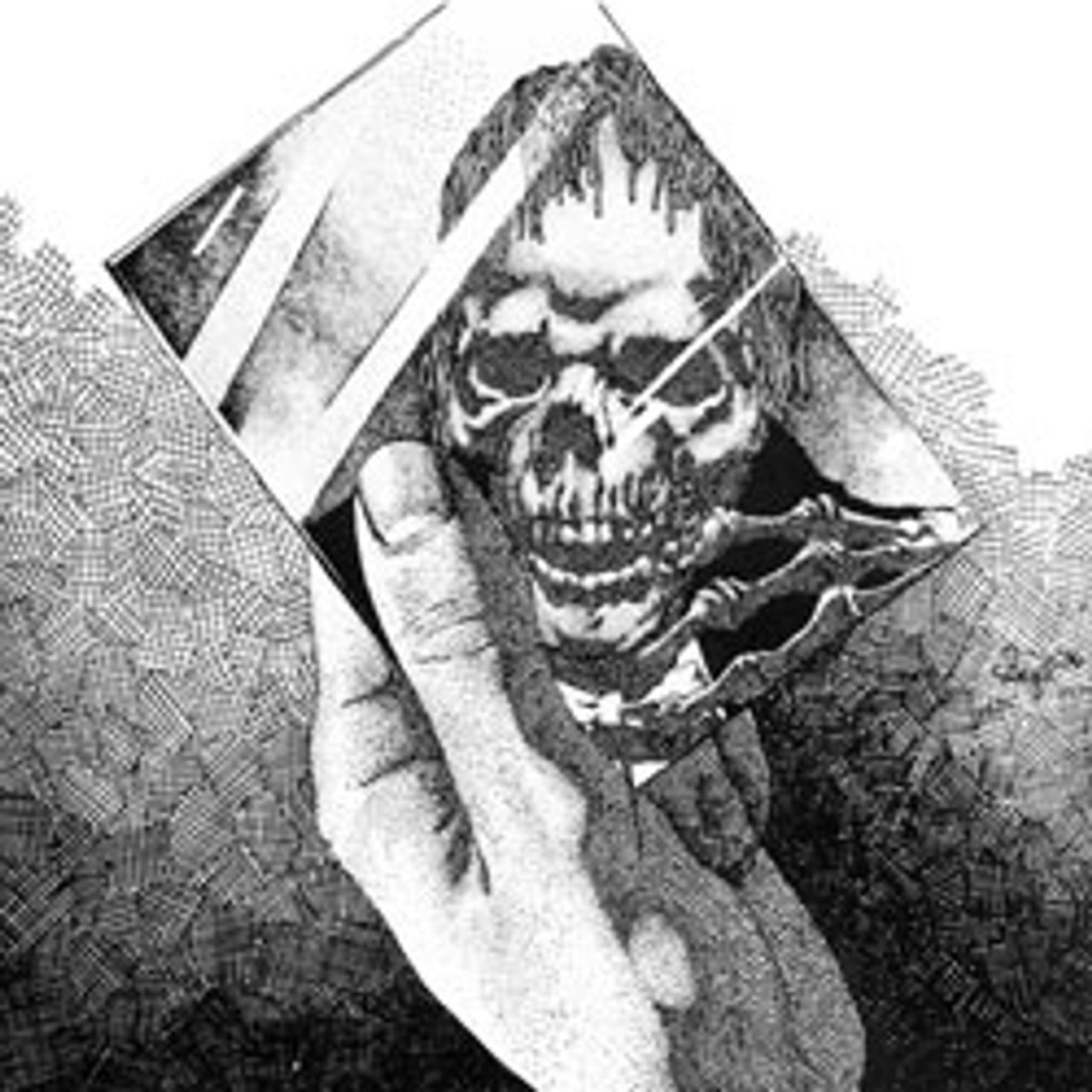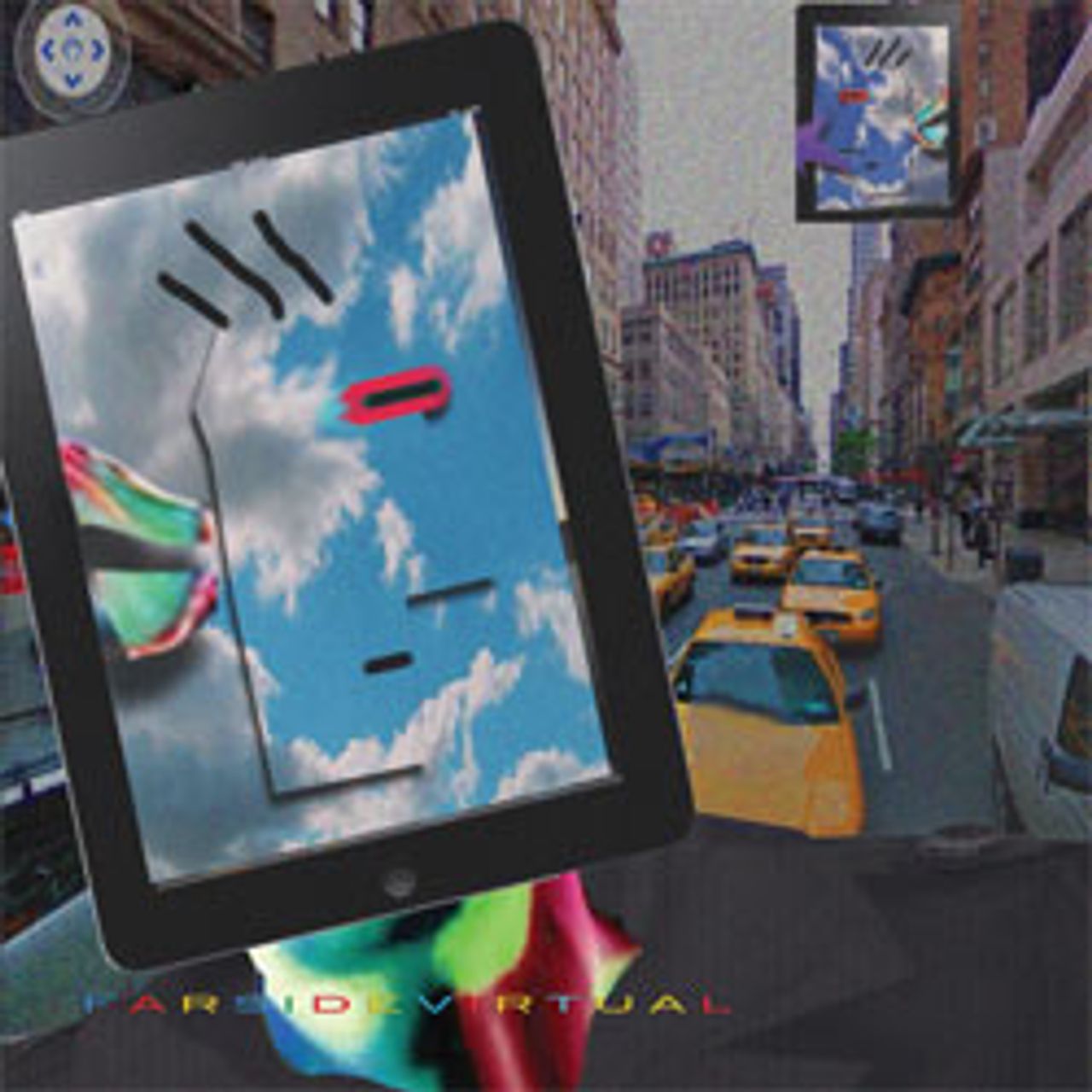Replica is Brooklyn-based experimental musician Daniel Lopatin’s eleventh release in five years under his main pseudonym, Oneohtrix Point Never. An odyssey through ten strange, evocative soundscapes comprised mainly of looped and edited samples, Replica represents a creative departure from the project’s previous material, mostly centered on the otherworldly sounds of synthesizers and various effects units.
Replica was built from of a vast smorgasbord of sounds: voices drone, stutter and gasp; footsteps flit past; panthers roar; videogame foes attack; electrical devices hum; an eagle’s caw echoes through mountains, etc. These are augmented by a fair amount of samples of brief musical phrases played on traditional instruments like pianos and hand drums. Lopatin chops to pieces, stretches, loops and deftly weaves these sonic elements into immersive settings that evolve and unfurl in interesting ways throughout their three-to six-minute runtimes. The result is an album of little impressionist marvels that evoke an enthralling and complex mix of moods and mental pictures.
Lopatin’s established skill as a hypnotically evocative sound designer and composer are on display on Replica’s best tracks, which take the listener on unpredictable little journeys that tug at the heartstrings in multiple directions. Opening track “Andro” gradually builds a blissful crescendo of human voices, birdsong and a slightly sour wooden flute; suddenly jungle cats attack and the track becomes a frantic escape. “Power of Persuasion” spins a cycle of piano loops alternately tense and angelic, until a mournful trumpet and an ocean tanker blare through it majestically like so much fog.
“Remember” presents a soothing, meditative ether of lushly reverberating, droning vocalizations, which is then disturbed by a distant voice insistently repeating “Remember!” The voice grows in volume until it upsets the track into a buzzing, stuttering coda. It feels like being jarred out of a pleasant daydream by a worry that had been temporarily forgotten. The initially playful “Child Soldier” begins with the album’s most danceable rhythm—a patchwork of 16-bit laser gun blasts, karate grunts and pregnant pauses—which is soon joined by a wonderfully chopped and arranged vocal hook that joyfully repeats “Time for you!” The whole thing is slowly swallowed by an encroaching children’s choir and a somber string ensemble.
A couple of the album’s less interesting tracks simply establish a wash of pleasing textures and drift away, but typically the listener can’t be sure where he or she will end up from one minute to the next.
 Perhaps a testament to the aesthetic power of the work is the fact that many of its early reviewers lauded Replica while being totally unaware of key facts about its creation. This is hardly their fault; the samples are brief and practically untraceable, and neither the album’s non-sequitur cover-art nor the song titles give even a hint at the source of the material. Only after its release did Lopatin reveal that Replica was constructed almost entirely from samples culled from a huge archive of US television commercials that aired in the 1980s and 1990s.
Perhaps a testament to the aesthetic power of the work is the fact that many of its early reviewers lauded Replica while being totally unaware of key facts about its creation. This is hardly their fault; the samples are brief and practically untraceable, and neither the album’s non-sequitur cover-art nor the song titles give even a hint at the source of the material. Only after its release did Lopatin reveal that Replica was constructed almost entirely from samples culled from a huge archive of US television commercials that aired in the 1980s and 1990s.
This suggests that Replica’s appeal is not simply a result of Lopatin’s personal creative abilities. The sounds contained within the ads for consumer products are the work of trained artists and technicians who work purposefully, and with the support of an entire industry, to create deep impressions upon the minds of viewers in a short space of time.
One can bet that the refreshing-beverage “Ahhhh”s of second track “Sleep Dealer,” for example, were the result of professional casting, dozens of takes, skillful use of expensive recording spaces and equipment, and perhaps even focus-group arbitration. Taking advantage of this leg-work, Lopatin has performed the impressive double trick of rendering the sounds untraceable through careful editing—thereby nipping in the bud readings which rely on nostalgia or a simple commentary on consumer culture—while at the same time retaining their honed ability to touch deeply and directly.
James Ferraro’s Far Side Virtual
 Far Side Virtual has much in common with Oneohtrix Point Never’s Replica: both albums were released in the autumn of 2011 by prolific experimental musicians from New York, both are a creative step sideways from the artist’s previous material and both lead listeners on a journey through fantastic realms constructed from cleverly-curated audio samples.
Far Side Virtual has much in common with Oneohtrix Point Never’s Replica: both albums were released in the autumn of 2011 by prolific experimental musicians from New York, both are a creative step sideways from the artist’s previous material and both lead listeners on a journey through fantastic realms constructed from cleverly-curated audio samples.
Where Replica’s samples, however, were either obscure or edited into unidentifiable pieces, Far Side Virtual’s sounds are perversely commonplace and lend the work an altogether different character. Its sixteen tracks are composed almost entirely from the sounds of computer operating systems, mobile phone apps, videogame console menus, car navigation voices and a myriad of other gadgets and automatons that have become a part of the daily lives of wide layers of the population.
Broadly speaking, consumer computer technology has often been marketed as a sophisticated, elegant, almost magical solution to life’s problems that will enhance the user’s experience of the world and even elevate the cultural level of society. Recounting his commission by Microsoft to compose the Windows 95 startup music, experimental composer Brian Eno told an interviewer that the request was for a piece that conformed to a long list of adjectives such as “inspirational, sexy, driving, nostalgic, sentimental … And then at the bottom it said ‘and not more than 3.8 seconds long.’”
Indeed, this still seems to be the formula today: sounds provide a way to both quickly inform users of the state of a device (on or off, ready or busy, sending or receiving, success or failure …) and also to color and guide the user-experience emotionally. Computers and gadgets can frustrate. Pleasantly innocuous sounds with mass appeal are required, especially since in the seventeen years since 1995 these sounds have become ever more ubiquitous as technology has been integrated into every aspect of modern life.
Far Side Virtual brings these intricate and fussed-over, yet innocuous and ever-present sounds out of the periphery of consciousness and into stark focus. Digital pianos and angelic choirs from various startup and shutdown sequences butt up against the bubbling Nintendo Wii menu as a text-to-speech algorithm orders a cup of coffee; an impossibly fake sitar darts exotically in and out of several tracks. The overall result is a startling caricature of modern life, at once soothing and upsetting, and immediately feels wrong and uncomfortable. This is a very effective trick, but there’s more to the album’s appeal.
Put simply, Far Side Virtual is supremely musical, and doesn’t read as noise at all. Ferraro is an exceptionally talented composer and here he is at his freewheeling best. Thus, many of the tracks transcend simple soundscapes to become more like concertos with positively symphonic arrangements. And though remarkably this is his first work to be made using a computer, Ferraro has considerable experience working in pastiche and sound collage. Rarely content to simply mock, many of these tracks manage to revel in their weirdness. There are moments of suspense, joy, dread, calm, cheekiness and apparent solemnity.
Far Side Virtual challenges us to take careful notice of overlooked aspects of our modern society, especially side effects of the information technology revolution, and either reject or embrace them.
